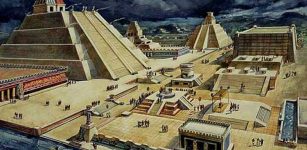X-Rays Reveal Secret From Da Vinci’s Masterpiece Mona Lisa
Jan Bartek - AncientPages.com - Leonardo da Vinci's painting Mona Lisa is an eternal masterpiece that has now given up a secret.
Using X-rays and infrared spectroscopy to analyze the chemical composition of da Vinci’s paint mixture, scientists in France and Britain examined microscopic fragments from the celebrated work of art “Mona Lisa.
Mona Lisa by Leonardo da Vinci. Credit: Public Domain
The result of the study published in the Journal of the American Chemical Society offers evidence of white lead pigment, oil in the layer beneath the artwork, and lead oxide. This orange pigment helped the paint dry and make it thicker. This is particularly interesting since lead compounds were not previously detected in Italian Renaissance paintings.
"Artists including 17th century master Rembrandt van Rijn are known to have added lead oxide to their pigments, but evidence of the technique hadn't surfaced before now in paintings from the earlier time of da Vinci, who lived from 1452 through 1519," Forbes reports.
In other words, da Vinci was experimenting with a number of techniques when painting his Mona Lisa.
The discovery attests “to Leonardo’s spirit of passionate and constant experimentation as a painter," Carmen Bambach, a specialist in Italian art at New York's Metropolitan Museum of Art, told the Associated Press. “It is what renders him timeless and modern.”
As reported by Forbes, "researchers led by Victor Gonzalez, a chemist at France’s top research body, the CNRS, scoured da Vinci’s manuscripts to confirm the long-held hypothesis that the artist added lead oxide to his paint mixture. They didn’t find any solid references. Then, a eureka moment: They spotted a lead mineral called plumbonacrite in the first layer of paint from the polymath’s artworks. They believe a chemical interaction between the oil and the lead oxide caused the plumbonacrite to form."
"Plumbonacrite is really a fingerprint of his recipe," Gonzalez said. "It's the first time we can actually chemically confirm it."
"He was someone who loved to experiment, and each of his paintings is completely different technically. In this case, it's interesting to see that indeed there is a specific technique for the ground layer of 'Mona Lisa,'" he said in an interview with The Associated Press.
The study was published in the journal American Chemical Society
Written by Jan Bartek - AncientPages.com Staff Writer





















